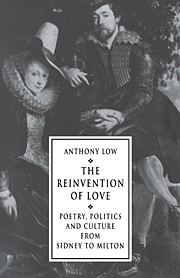Book contents
- Frontmatter
- Contents
- Preface
- Introduction
- 1 Sir Philip Sidney: “huge desyre”
- 2 John Donne: “Defects of lonelinesse”
- 3 John Donne: “the Holy Ghost is amorous in his Metaphors”
- 4 George Herbert: “the best love”
- 5 Richard Crashaw: “love's delicious Fire”
- 6 Thomas Carew: “fresh invention”
- 7 John Milton: “Because wee freely love”
- 8 John Milton: “Haile wedded Love”
- Conclusion
- Notes
- Index
4 - George Herbert: “the best love”
Published online by Cambridge University Press: 02 October 2009
- Frontmatter
- Contents
- Preface
- Introduction
- 1 Sir Philip Sidney: “huge desyre”
- 2 John Donne: “Defects of lonelinesse”
- 3 John Donne: “the Holy Ghost is amorous in his Metaphors”
- 4 George Herbert: “the best love”
- 5 Richard Crashaw: “love's delicious Fire”
- 6 Thomas Carew: “fresh invention”
- 7 John Milton: “Because wee freely love”
- 8 John Milton: “Haile wedded Love”
- Conclusion
- Notes
- Index
Summary
As we have seen, John Donne recognized the marriage trope, which he inherited from the tradition, to be the dominant biblical metaphor for divine love. Yet his naturally aggressive, masculine personality made it hard for him to accept the feminine role the trope demanded in loving God. His difficulty may have stemmed, as well, from a habit of mind in the English Protestant Church. As a result of various historical and religious developments, the Anglican Church was so constituted as to accustom its members to patriarchal governance and to incline them toward greater militancy and “masculinity” than was the case with its Roman-Catholic counterpart. These habits of mind stemmed not so much from religious principles or from theological doctrines as from broad cultural practices.
On the lay level, within the institution of marriage, and increasingly in the various separatist and congregationally organized sects, women may have gained something in their relations with men. Scholars have disagreed, however, as to whether women were generally better off in the Renaissance and Reformation than they had been in the Catholic Middle Ages. In England, the abolition of women's (as well as of men's) religious orders and the ejection of the Virgin Mary and of female (as well as of male) intercessory saints from devotional and liturgical practices left the Anglican State Church, which was also now subordinate to the King, to the two Houses of Parliament, and to lay authority, almost entirely masculine, both administratively and in its spirit.
- Type
- Chapter
- Information
- The Reinvention of LovePoetry, Politics and Culture from Sidney to Milton, pp. 87 - 107Publisher: Cambridge University PressPrint publication year: 1993



